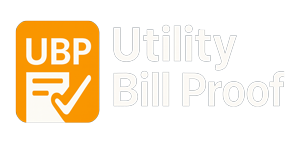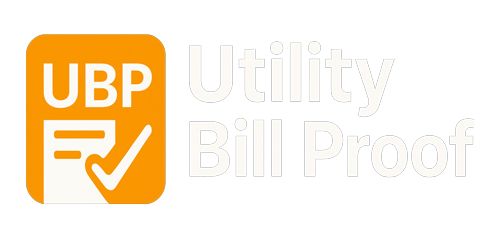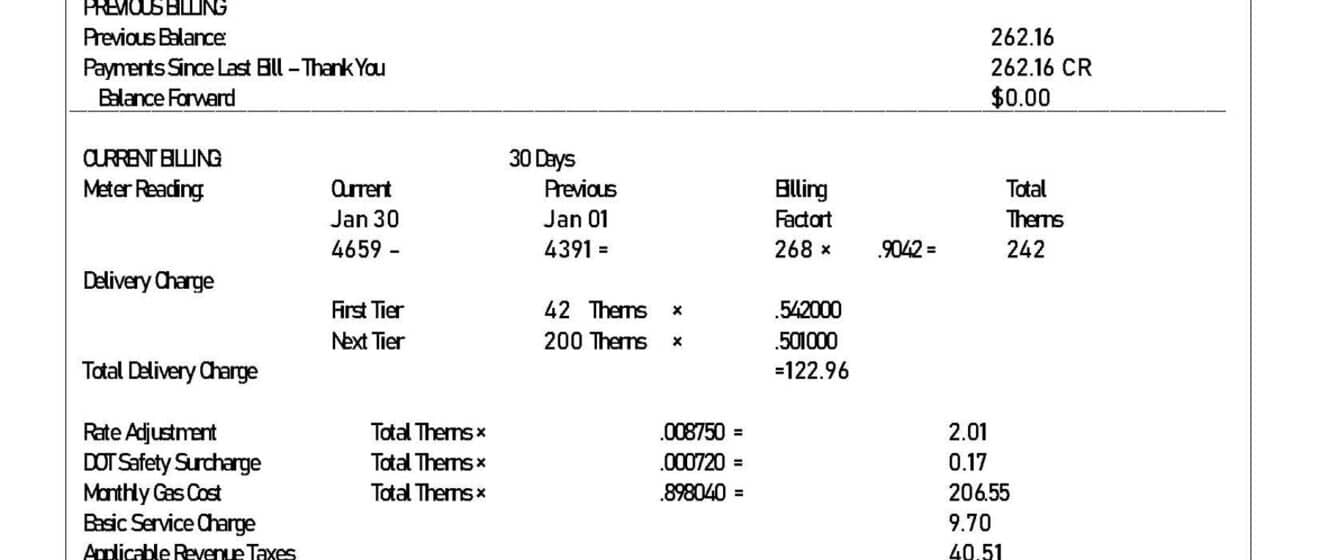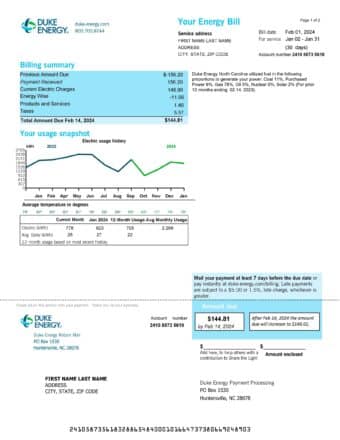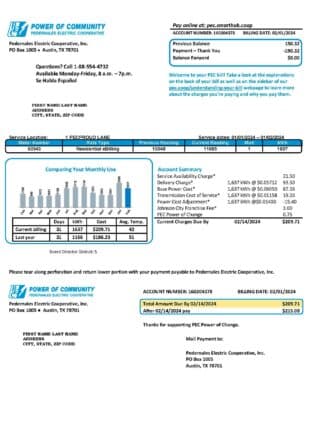In today’s digital age, the effective management of utility bills and proof of address documentation has become increasingly crucial for financial stability and legal compliance. Studies indicate that approximately 2-3% of the population annually requires proof of address verification for essential services, including banking operations, government services, and rental agreements. The emergence of online platforms has transformed traditional documentation processes, making them more accessible while maintaining address verification standards.
Introduction
Utility bills serve as fundamental tools for both financial tracking and identity verification. These documents play a vital role in establishing proof of residence online, particularly in an era where digital transformation has revolutionized administrative processes. For instance, financial institutions consistently rely on utility bills as primary documentation for address verification, with research showing that over 80% of banks accept digital utility statements as valid proof of address for account opening procedures.
Why This Guide Matters
This comprehensive guide caters to diverse audiences facing unique documentation challenges. For renters, it provides solutions for establishing proof of residence online when transitioning between properties. Professionals benefit from streamlined methods to make proof of address online for employment verification and business registration. Homeowners can leverage this guide to efficiently manage utility accounts and generate necessary documentation for various administrative requirements.
Who Can Benefit from This Guide?
The following sections offer practical insights into creating and managing proof of address documentation efficiently. Readers will learn how to generate proof of address online using secure digital platforms, understand the nuances of utility bill management, and master the essential aspects of address verification processes. This guide emphasizes practical solutions while maintaining compliance with legal requirements, ensuring readers can navigate documentation requirements confidently in both traditional and digital contexts.
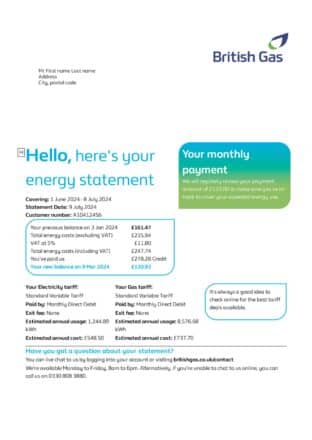
Understanding Utility Bills and Their Role
Utility bills are more than just monthly reminders of what you owe. They serve as a window into your household’s resource usage and play a critical role in managing your finances. Let’s explore what utility bills are, why they matter, and how to spot and fix common issues.
What Are Utility Bills?
Definition and Components: Electricity, gas, water, and more
Utility bills keep track of your household’s consumption of essential services like electricity, gas, water, and internet. These bills break down how much you’ve used and what you’re being charged for it. For example, electricity is measured in kilowatt-hours (kWh), gas in therms, and water in gallons. Modern tools like smart meters make this process even more accurate by providing detailed, real-time usage data.
Utility Bill Formats: Terms and examples of layouts
Every bill follows a similar format, which makes it easier to understand. Typically, you’ll find your name and address at the top, along with an account number that’s unique to you. Below that, the bill will show the billing period, your current and previous meter readings, and a breakdown of the charges. It’s all laid out to help you see exactly how much you’ve used and what it’s costing you.
Why Are Utility Bills Important?
Financial Significance: Budgeting and savings through utility bills
Utility bills might seem routine, but they’re incredibly useful in both financial and practical terms.
On the financial side, they’re a valuable tool for keeping your expenses in check. By reviewing your bills regularly, you can spot trends in your usage. For instance, if your water bill spikes one month, it might point to a leak. You can also use this information to budget better, making adjustments to avoid waste and save money over time.
Utility bills are also important for more official reasons. They often act as proof of residence, something you might need to open a bank account, rent an apartment, or apply for certain government services. Keeping your bills accurate and up to date ensures you always have reliable documentation when you need it.
Common Errors in Utility Bills
Identifying Mistakes: Incorrect readings or charges
While utility bills are designed to be accurate, mistakes do happen. It’s not uncommon to see errors that lead to higher charges or confusion.
One of the most frequent issues is incorrect meter readings. If the numbers are recorded wrong, your usage might look higher than it actually is. Other common mistakes include being charged at the wrong rate, duplicate fees, or even overlapping service dates. And of course, there’s always the chance that your billing address is entered incorrectly.
To avoid paying for these errors, it’s a good habit to check your bills closely every month. Compare the readings on your bill to the ones on your meter, and keep an eye out for anything that seems unusual or out of place.
Resolving Errors: Steps to dispute issues
If you spot an error, don’t panic—these issues can usually be resolved fairly easily. Start by gathering all the information related to the mistake. For example, if the meter reading looks off, take a photo of your current reading to show your utility provider.
Next, contact customer service for your utility company. Explain the issue and provide any evidence you’ve collected. In some cases, you might need to submit a written dispute, especially if it’s a more complex problem. Be sure to follow up regularly and keep a record of all your communications.
Once the issue has been resolved, double-check your next bill to make sure the corrections have been applied. If everything looks good, you’re back on track. If not, don’t hesitate to reach out again to ensure the problem is fully addressed.
Tools and Techniques for Managing Utility Bills
In today’s digital age, utility bill management has undergone a dramatic transformation through technological innovation and sophisticated software solutions. These advancements have revolutionized how households and businesses track, analyze, and optimize their utility expenses while maintaining accurate records for various purposes, including proof of residence and financial planning.
Digital Tools for Utility Bill Management
Modern utility management applications have emerged as comprehensive solutions for handling household expenses and documentation. These specialized platforms combine advanced features with user-friendly interfaces, creating powerful tools for both financial tracking and administrative documentation. Leading applications in this space integrate artificial intelligence and machine learning capabilities to provide predictive analytics and personalized recommendations based on individual usage patterns.
Apps for Tracking and Budgeting: Features and examples
The most sophisticated utility management applications offer real-time consumption monitoring through smart meter integration, enabling users to track their usage patterns with unprecedented precision. These systems provide automated bill scanning and digitization, converting paper statements into searchable digital records while maintaining their validity as proof of residence. Advanced pattern recognition algorithms analyze historical data to identify potential cost-saving opportunities and alert users to unusual consumption patterns that might indicate equipment malfunction or billing errors.
Payment management features have evolved to include automated scheduling with smart reminder systems that adapt to individual payment patterns and preferences. Document storage solutions incorporate military-grade encryption to protect sensitive information while ensuring easy accessibility for authorized users. Budget allocation tools utilize predictive modeling to help users plan for seasonal variations and unexpected expenses, while customizable alert systems provide real-time notifications for various triggers, from usage spikes to payment deadlines.
Online Portals: Utility provider websites for tracking payments
Utility providers have invested heavily in developing sophisticated web platforms that offer comprehensive service management capabilities. These portals serve as centralized hubs for account management, providing secure access to real-time usage data, billing information, and historical consumption patterns. Modern platforms increasingly integrate with smart home devices and energy management systems, creating a seamless ecosystem for utility monitoring and control.
Portal features typically include advanced payment processing options, paperless billing systems with automatic archiving, and interactive tools for usage analysis. Many providers now offer mobile applications that sync with their web portals, enabling users to manage their utilities from anywhere. Historical data visualization tools help users understand their consumption patterns through interactive graphs and charts, while document management systems maintain secure records for proof of residence and financial planning purposes.
Budgeting for Utility Expenses
Creating a Monthly Plan: Setting realistic limits
Effective utility expense management requires a sophisticated approach to budgeting that combines historical analysis with predictive planning. Modern budgeting strategies incorporate multiple data points, including seasonal variations, historical usage patterns, and projected rate changes. This comprehensive approach enables users to create realistic monthly plans while maintaining adequate reserves for unexpected expenses.
Advanced budgeting systems typically include automated tracking of both fixed and variable costs, with separate categorization for different utility types. These systems often integrate with banking and financial planning tools to provide a complete picture of household expenses. Usage trend monitoring helps identify potential savings opportunities while maintaining accurate records for address verification purposes. Emergency fund calculations incorporate historical data on usage spikes and unexpected expenses to recommend appropriate reserve levels.
By leveraging these modern tools and techniques, users can maintain better control over their utility expenses while ensuring proper documentation for various administrative requirements. The integration of digital solutions with traditional utility management practices creates a robust system for both financial planning and record-keeping purposes.
Proof of Address: What You Need to Know
Generating Proof of Address Online
Platforms and Tools: Apps to create digital proofs
Digital technology has transformed the process to create a proof of address online through secure, modern platforms that prioritize both security and usability. These platforms combine advanced verification mechanisms with intuitive interfaces, ensuring documents meet institutional requirements while remaining accessible to users.
Leading platforms integrate comprehensive security features including encrypted document storage, digital signatures with blockchain verification, and automated compliance checking. Most systems offer customizable templates aligned with specific organizational requirements, real-time verification tracking, and secure cloud-based document management.
The standardized process for generating verified documentation typically includes selecting a verified platform based on institutional acceptance, uploading supporting materials through secure channels, completing multi-factor authentication and identity verification, processing documentation through automated compliance systems, and accessing verified documents via secure distribution methods.
Alternatives When Utility Bills Aren’t Available
When standard proof of residence documentation isn’t available, alternative verification methods become essential. These alternatives require specific formatting and thorough authentication to ensure validity across different jurisdictions.
Affidavits and Landlord Letters: How to obtain them
For landlord letters, documentation must be presented on official letterhead containing complete business details, along with comprehensive property information and explicit rental period documentation. The letter requires authorized signatures and verification stamps, complete tenant identification, and property registration references.
Affidavits of residence involve more rigorous requirements, including professional notarization and witness statements with verification contacts. These documents must detail residency duration, clearly explain ownership relationships, include supporting evidence attachments, and contain legal declarations under penalty of perjury.
The process involves coordinated effort between property owners and legal professionals, following jurisdiction-specific requirements. These alternatives typically undergo enhanced scrutiny compared to utility bills, demanding meticulous attention to formatting, content, and authentication procedures.
